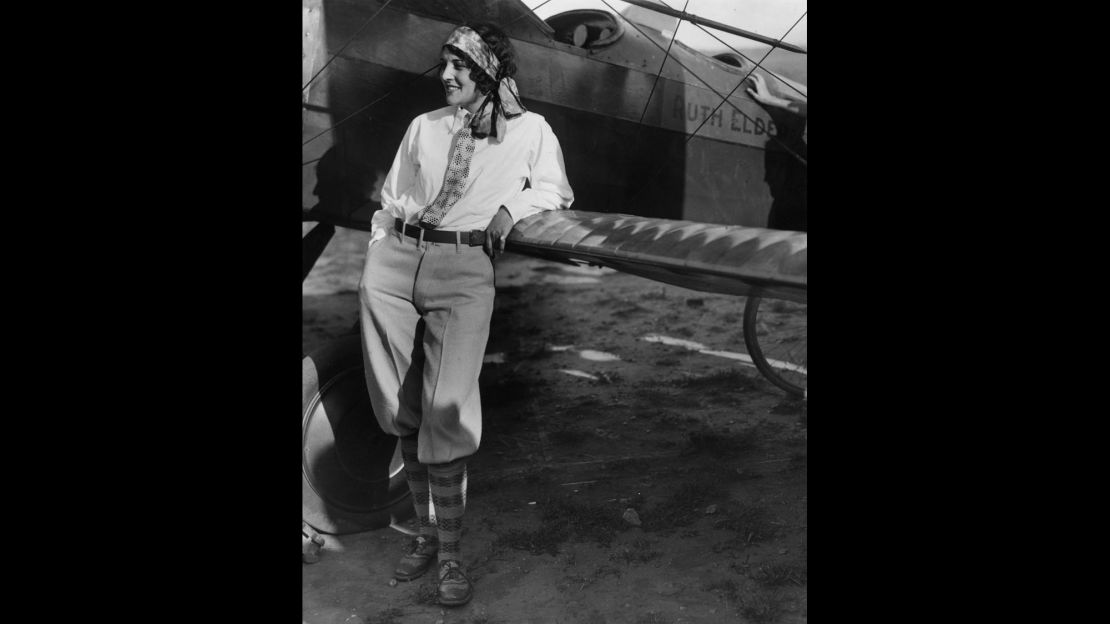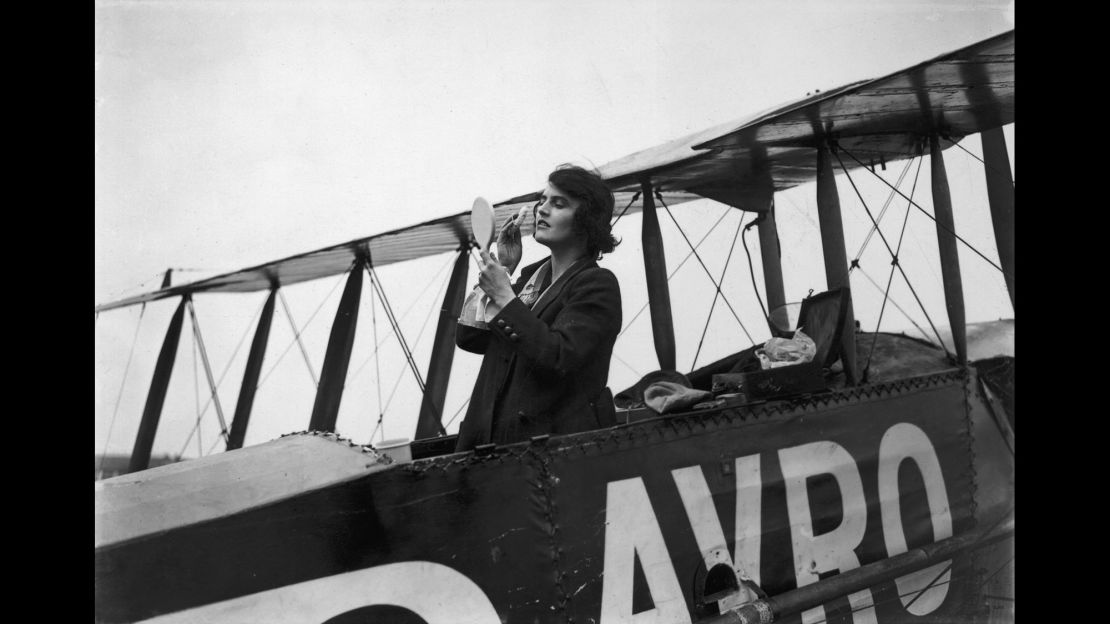Story highlights
"History turned its back on them," says one researcher
Focusing on these women can inspire young girls, says another
Bessie Coleman broke multiple barriers when she took flight in 1921, and became the first African-American woman to earn a pilot’s license.
Today’s Google Doodle commemorates the 125th anniversary of her birth. Coleman was among a small group of female aviators in the early 20th century who successfully flew around the detours of racial prejudice and sexism to become queens in the air.
Worldwide, only 3% of airline pilots are women, the Royal Aeronautical Society said earlier this month.
Now, there’s a move to change that.
And the obvious place to begin is by highlighting the achievements of the long-forgotten queens of the air – the women who ignored the men who scorned them, broke through the restrictions society placed on them, and paved the way for Amelia Earhart.
Queen B: Bessie Coleman
Very few American women of any race had pilot’s licenses by 1918, but those who did were often white and rich. Undeterred, she learned French and moved to Paris. In 1921, Coleman became the first female pilot of African-American and Native-American descent.
Upon her return to the US she still faced discrimination and found work barnstorming, according the Chicago Defender newspaper. As a stunt pilot she dazzled crowds as she parachuted from planes and performed aerial tricks. The pioneering daredevil was given the nickname “Queen Bessie.”
She died at 34 in 1926 during a practice run with another pilot. About 10 minutes into the flight, as they were doing a dive, the engine stopped working and Coleman fell from the plane. While she never fulfilled her dream to open a flight school for future black pilots, Coleman’s imprint on aviation history lives on.
History's forgotten women aviators
Aviators’ stories still unfolding
More than 100 years after Harriet Quimby broke down barriers as the first woman to earn a pilot certificate, there are still very few women who choose flying as a career.
Here are some of them, whose stories researcher and author Laurie Notaro dug up for her book, Crossing the Horizon.
Below are some of their stories.
Miss America of Aviation: Ruth Elder
Ruth Elder was known for her beauty and acting, but her real dream was to become the female version of transatlantic aviator Charles Lindbergh.
Newspapers at the time loved to describe her as ‘the pretty American girl’ who refused to give up her dream of flying from New York to Paris.

A woman out of her time, she even put flying above marriage.
“Her husband complained that she devoted all her attention to aviation and none to her home,” reported The Scotsman in 1930.
But mechanical problems caused her monoplane, and dream, to crash in her last attempt on October 11, 1927.
She survived, floating in the Atlantic Ocean, 360 miles from land before she was rescued. At the time, it was the longest flight ever made by a woman.
“I knew if the venture succeeded it would lift me from obscurity. If it failed, and I went down, it would only be another useless life lost,” Elder told the Sunday Mail.
Her name, while often overlooked, will forever linked to the title “Miss America of Aviation”.
A British Earl’s daring daughter: Elsie Mackay
The daughter of British Earl James Mackay, Elsie Mackay insisted on being both an actress and a flier.
She was better known by the public as Poppy Wyndam. That’s the name she picked to avoid her father’s ire in her career choices.

But while Mackay stared in eight films, she died trying to accomplish her true dream: becoming the first woman to cross the Atlantic by air in March 1928.
Mackay flew under a male pseudonym and planned her entire flight in secrecy, researcher and author Laurie Notaro told CNN. This included “bringing an airplane over from the United States because no one would sell her one in England.”
The queen of diamonds and air: Mabel Boll
Mabel Boll, got her nickname – the Queen of Diamonds – because she loved her sparkly jewelery. But the American socialite loved flying even more. She wanted to be remembered as the ‘Queen of the Air.’
When living in Paris as a young widow, she tried to find a pilot to fly with her across the Atlantic in January 1928.
“Mabel Boll was also Amelia Earhart’s closest and fiercest competitor. She and Earhart were stationed 90 miles apart on Newfoundland, depending on the same weather reports to make their transatlantic attempts,” Notaro told CNN.
Boll didn’t succeed. Earhard made the crossing six months later, in June.
Why remember these women?
“Everyone knows about Charles Lindbergh, but that’s not the case for these women,” Notaro said. “History turned its back on them. I very much wanted to right that wrong.”
“We have to remember the other pioneering aviatrixes who paved the way for Amelia Earhart as well as all of the woman pilots that came after them,” she added.
For Hamilton, the aviation researcher, focusing on these women can inspire young girls.
“It helps young women see that they can actually follow their aviation or aerospace dreams because they see the face of a woman trailblazer,” Hamilton said.







